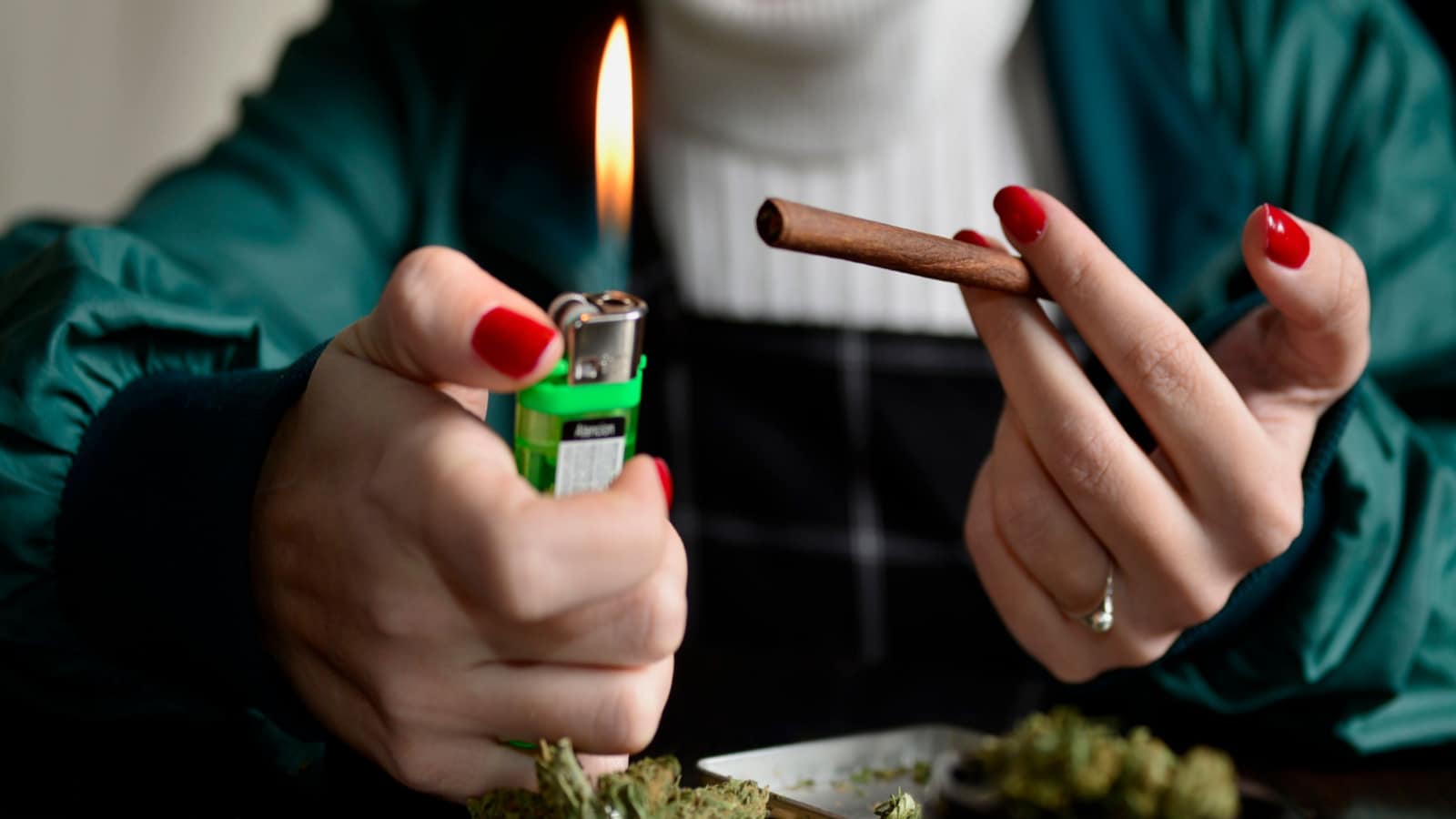Are you feeling lost yet? We get it. There are so many new things popping up when it comes to cannabis research that it can feel a bit overwhelming. Where do they all come from, what do they do, and how can you try them? Just when you were getting familiar with Delta-8 and Delta-10, all of these newer THC molecules joined the party. The good news is that we’ve got the full breakdown of the latest THC variants. Here’s everything you need to know when looking at THC-O vs THCP vs THC-H vs THC-B.
THCA: The Precursor
THCA, or tetrahydrocannabinolic acid, is a natural compound found in cannabis plants. It is considered a precursor to the psychoactive compound THC, which is responsible for the “high” associated with marijuana use. THCA itself does not produce the same intoxicating effects as THC, but it plays a crucial role in producing various THC cannabinoids.
Cannabis plants synthesize THCA through a process called biosynthesis. As the plant grows, it produces an enzyme known as THCA synthase, which catalyzes the conversion of a precursor molecule called cannabigerolic acid (CBGA) into THCA. This reaction occurs within specialized cells called trichomes, the resin-producing structures found on the surface of cannabis flowers and leaves.
When cannabis is exposed to heat, such as through smoking, vaporization, or cooking, a process known as decarboxylation occurs. This process involves the removal of a carboxyl group from the THCA molecule, resulting in the conversion of THCA into THC – including multiple deltas. This is the chemical transformation responsible for the psychoactive effects of cannabis when consumed.
It’s worth noting that THCA itself has gained attention for its potential therapeutic properties, including anti-inflammatory, neuroprotective, and antiemetic effects. Some people consume raw cannabis or cannabis juice to benefit from these potential therapeutic effects of THCA without experiencing the intoxicating effects of THC.
Introduction to: THC-O vs THCP vs THC-H vs THCB
While THC molecules have several similarities, each of the cannabinoids does have its own unique properties when it comes to how they affect you. That’s primarily because of their molecular makeup and how those differences affect our endocannabinoid system (ECS).
For example, a cannabinoid needs to have at least three carbon atoms in an alkyl chain for the cannabinoid to have an effect on CB1 receptors in the ECS. When the CB1 receptors are activated, that’s what causes you to feel stoned or high. So, what are the similarities and differences when comparing THC-O vs THCP vs THC-H vs THCB?
THC-O
THC-O is an ester of THC. It is synthesized in a lab by adding the highly flammable substance acetic anhydride to a THC molecule. The addition of this acetate is where the “O” comes from in its name. Because it is not naturally occurring in cannabis, it doesn’t have a more formal name like other cannabinoids.
Molecular Structure: THC-O has five carbon atoms just like THC, but with the addition of acetate.
Natural or Synthetic: THC-O is not naturally occurring, and is, therefore, a fully synthetic cannabinoid that must be manufactured in a lab.
How it Works: The acetate added to the THC molecule makes this cannabinoid much more bioavailable. This means that the body can absorb and process it more efficiently, making THC-O an incredibly potent cannabinoid in comparison to regular Delta-9 THC.
Effects: Because it is so much more potent, THC-O is seen as more psychoactive than other cannabinoids. In fact, some people claim that it is three times more potent than THC, and when taken in large doses can provide mild psychedelic effects. You can expect a stronger, more intense high with amplified physical effects and the overall feeling of being “altered”.
Legal Status: In February, 2023, the DEA listed all Delta-8 and Delta-9 THC-O products as Schedule 1 substances, thereby banning any further sale or production of these cannabinoids.
THCP
THCP is short for tetrahydrocannabiphorol. Although found in smaller amounts, it can be extracted from cannabis to produce larger quantities. This novel cannabinoid was only recently discovered in 2019 and is becoming well known for its extreme potency.
Molecular Structure: THCP has seven carbon atoms. It has been shown to be up to 30 times more effective than THC when it binds to CB1 receptors.
Natural or Synthetic: THCP is a naturally occurring cannabinoid found in cannabis.
How it Works: THCP bonds strongly to the CB1 receptors, which are responsible for producing the more psychoactive effects of particular cannabinoids. These receptors are found in your brain and throughout the central nervous system.
Effects: The research surrounding THCP is still very new, but it’s believed that it might be an amazing resource for people looking to treat severe chronic pain and mobility problems. Because it is so potent, someone who needs large and frequent doses of cannabis may be able to consume less to achieve the same, or better, results.
Legal Status: Much like other newer cannabinoids, THCP exists somewhere in a gray area. So long as it is from hemp, it’s protected under the 2018 Farm Bill. Final products must contain less than 0.3% THC. It’s possible that you’ve even consumed it before since it is naturally occurring in cannabis. If you’ve ever consumed cannabis and gotten much higher than before, it could have been that there was a bit more THCP in that particular strain.
THC-H
The same researchers that discovered THCP in 2019, soon found tetrahydrocannabihexol (THC-H) in 2020. Much like THCP, this novel cannabinoid is said to be highly potent, far surpassing the psychoactive properties of regular THC.
Molecular Structure: THC-H is a hexyl homolog of Delta-9 THC. This means that they are nearly identical in molecular structure, but THC-H has an n-hexyl side chain. A hexyl group is “an irregular, saturated radical compound of hydrogen and carbon, derived from hexane.”
Natural or Synthetic: THC-H is a naturally occurring cannabinoid found in trace amounts in cannabis. It can be extracted to produce larger quantities, or it can be produced synthetically.
How it Works: Like all THC variants, THC-H binds strongly to the CB1 receptors to provide its effects. Although THCP is currently the most potent cannabinoid we know of, THC-H is a close second.
Effects: Much like THCP, THC-H is pretty new so we don’t know as much about this cannabinoid as others. However, we do know that it is poised to provide mood-boosting effects and pain relief for those who need it. So far, we have mice studies backing these claims that will hopefully prove to be true for humans as well.
Legal Status: The legal status of THC-H is just like all cannabinoids. The source of origin determines the legality. Marijuana-derived THC-H is legal only in regulated states through dispensaries, and hemp-derived is available commercially to adults over 18.
THCB
Tetrahydrocannabutol (THCB) is the most abundant cannabinoid found in cannabis plants and the one responsible for the high we feel when consuming weed. It’s now believed that much of the high we experience is largely due to the presence of THC-B.
Molecular Structure: THCB has four carbon atoms on the alkyl chain.
Natural or Synthetic: THCB is naturally occurring in both hemp and marijuana.
How it Works: The researchers who discovered THCB found that it binds to both CB1 and CB2 receptors throughout the brain. It binds more strongly to CB1 than plain THC. Because of this, it’s believed that THCB is more potent than THC, despite having only four carbon atoms. However, researchers do not have conclusive numbers to suggest exactly how much more potent.
Effects: Early research indicates that THCB may be beneficial for decreasing pain, promoting better quality sleep, and providing anti-inflammatory effects.
Legal Status: Yep, you guessed it. The same rules apply for THCB as with all other cannabinoids on this list.
Where to Buy THC-O, THCP, THC-H, THCB
Many of these cannabinoids are just now finding their way into products. It takes a little effort to produce tangible quantities for mass production, so the roll-out is ramping up slowly but surely. Many of these cannabinoids will be available in vape pens, gummies, tinctures, and other products online. Brands like Herban Bud and LOOPER have a great cannabinoid selection, including THC variant cartridges and other novel cannabinoids like HHC, HHC-O, and HHC-P.







